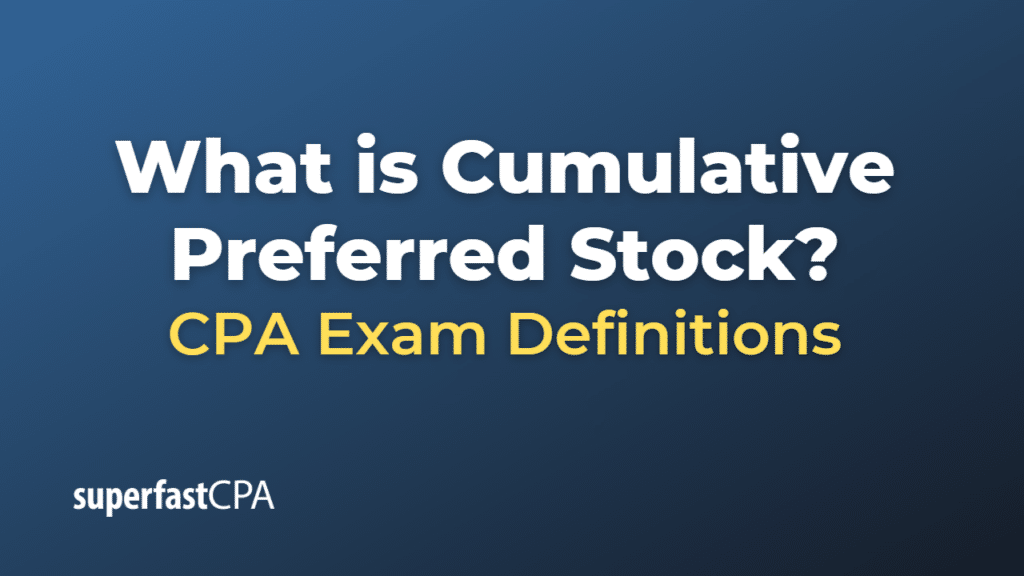Cumulative Preferred Stock
Cumulative preferred stock is a type of preferred stock that has a provision stating that if any dividend payments have been missed in the past, the dividends owed must be paid out to cumulative preferred shareholders first, before common shareholders can receive dividends.
Dividends on preferred stocks are typically set at a fixed amount, whereas dividends on common stocks can fluctuate based on the company’s profitability. If a company runs into financial trouble and has to skip a dividend payment, holders of cumulative preferred stock have the right to receive those missed payments at a later date. This is known as “dividends in arrears.”
For example, if a company with cumulative preferred stock misses dividend payments for two years, and then resumes paying dividends, the cumulative preferred shareholders would first receive the dividends for the current period, plus the dividends for the two missed years, before any dividends could be paid to common shareholders.
This feature makes cumulative preferred stock more attractive to investors who are primarily interested in dividend income, as it provides an additional level of protection against missed dividend payments. However, like all investments, cumulative preferred stock carries risks, including the risk that the company could become insolvent and be unable to pay the dividends owed.
Example of Cumulative Preferred Stock
Llet’s consider a hypothetical company, TechCo, that has issued cumulative preferred stock with an annual dividend of $2 per share.
Now suppose that due to a difficult financial year, TechCo is unable to pay dividends one year. The cumulative preferred stockholders are therefore owed $2 per share in dividends.
In the following year, TechCo’s financial situation improves and it decides to pay dividends again. Because the preferred stock is cumulative, TechCo must first pay the $2 per share that it owes from the previous year to the cumulative preferred stockholders. After that, it can distribute the current year’s dividends.
So if you held 100 shares of TechCo’s cumulative preferred stock, you would receive $400 in dividends for the year when dividends were resumed: $200 for the previous year’s missed dividends, and $200 for the current year’s dividends.
This is a simplified example, but it illustrates the principle of how cumulative preferred stock works. In reality, companies may have complex capital structures with different classes of stock, each with its own dividend policies and rights in the event of missed dividends.













